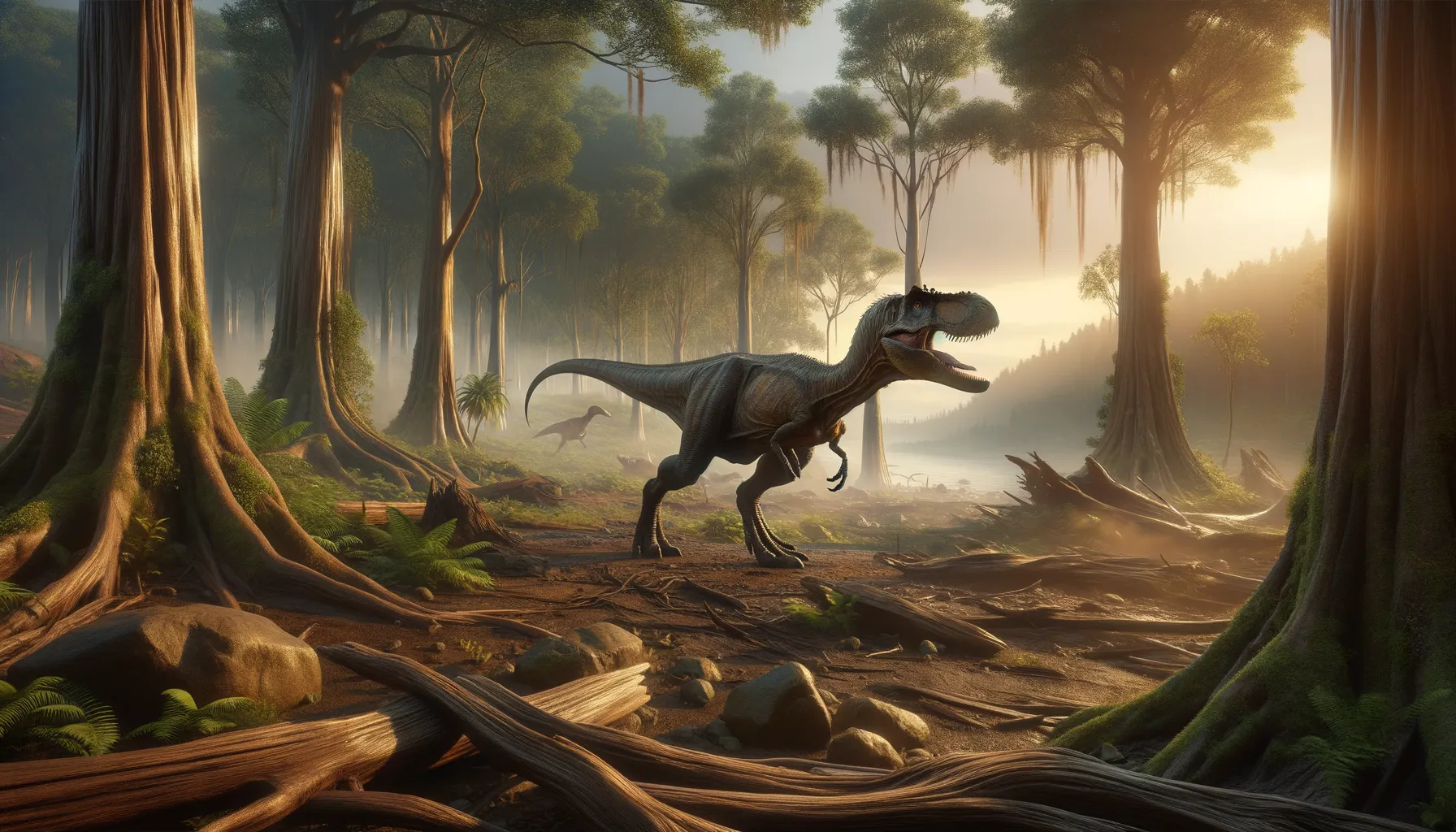
Chingkankousaurus
Uncovering secrets of a nimble predator.
Period
Cretaceous
Length
Estimated around 4 to 5 meters long.
Height
Approximately 2 meters tall at the hips.
Weight
Estimated around 1 ton.
Chingkankousaurus is a relatively lesser-known theropod dinosaur that roamed the Earth during the Late Cretaceous period. Its fossils were discovered in China, providing clues about its existence. This dinosaur is believed to have been a carnivore, preying on smaller animals. Though not as large as some of its relatives, it was likely a nimble predator, capable of swift movements. Ongoing research aims to uncover more about its lifestyle and ecological role.
Diet
As a carnivore, Chingkankousaurus likely fed on smaller dinosaurs and other animals. It might have consumed lizards, early mammals, and possibly insectivores to fulfill its dietary needs.
Hunting
Its hunting behavior would have required it to be agile and strategic, likely ambushing prey using its environment for cover. It might have relied on surprise and speed to catch its meals.
Environmental challenges
During the Cretaceous period, this dinosaur faced various environmental challenges, such as changing climates and competition for resources. Adapting to these changes would have been crucial for survival. The presence of larger predators might have also posed significant threats, requiring the species to develop survival strategies. Additionally, natural disasters such as volcanic activity could have altered its habitat.
Speed
Estimated to be moderately fast.
Lifespan
Exact lifespan is unknown; estimates suggest several decades.
First discovery
First discovered in China in 1958.
Fun Facts
- Chingkankousaurus is a genus of theropod dinosaur that lived during the Late Cretaceous period.
- The name Chingkankousaurus means 'Chingkankou lizard,' named after the region in China where its fossils were discovered.
- It is known from very limited fossil material, primarily a single vertebra, making it a mysterious dinosaur.
- Chingkankousaurus is believed to have been a carnivorous dinosaur, likely preying on smaller animals.
- Due to the scarcity of fossils, much about this dinosaur remains speculative, sparking curiosity among paleontologists.
- Its classification has been debated, with some suggesting it might be related to other theropods, like Tyrannosaurus or Alioramus.
- Despite its obscurity, Chingkankousaurus highlights the rich and diverse dinosaur fauna that once roamed Asia.
Growth and Development
The growth and development patterns of Chingkankousaurus remain largely speculative, with potential clues drawn from similar theropods. It's believed they experienced rapid growth in the early stages, reaching maturity quickly to compete in their environment. Like other theropods, this dinosaur might have relied on parental protection during early life stages. Fossil evidence is limited, but growth rings in bones could provide insights into their development over time.
Habitat
Chingkankousaurus lived in what is now China, likely inhabiting forested areas with ample cover for hunting. The region during the late Cretaceous was characterized by a warm climate, supporting a diverse range of plant and animal life. The landscape may have included rivers, lakes, and floodplains, providing a rich ecosystem for sustenance. Such environments would have facilitated both hunting opportunities and nesting sites.
Interaction with other species
This dinosaur likely coexisted with various other species, both prey and predators. Its interactions might have included competition for food with other carnivores and avoiding larger predators. Territorial disputes could have been common, as multiple species competed for limited resources. Mutualistic relationships with certain species cannot be ruled out, potentially aiding in hunting or scavenging.
Natural lifespan
Its natural lifespan might have been comparable to other theropods, perhaps stretching up to several decades.
Reproduction
Reproductive habits are largely speculative, but it likely laid eggs like other theropods, nesting in secluded areas. The presence of parental care, such as guarding nests and young, could have contributed to offspring survival. Females might have selected specific sites for nesting to ensure protection and optimal incubation temperatures. Fossils of nests or eggs would provide more concrete information but remain undiscovered.
Social behaviour
If Chingkankousaurus exhibited social behaviors, they might have included small group living or solitary hunts with occasional pack cooperation. Communication among individuals could have involved vocalizations or visual signals to coordinate activities. Territoriality might have been marked by displays or scent markings. Social structures like hierarchies are possible but unconfirmed due to limited fossil evidence.
Fossil locations
Fossils of Chingkankousaurus have been primarily found in China, giving researchers insight into its existence and environment. The lack of a comprehensive fossil record limits details about its global distribution. Future discoveries could potentially reveal additional locations or expand the known range of this species. Each new fossil find provides essential clues for reconstructing its paleoecology.
